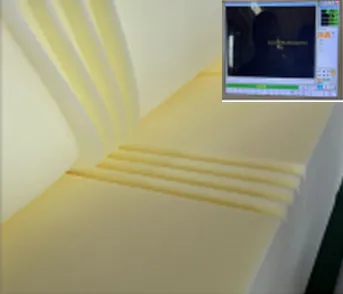CE Certification for Medical Beds Designed for Elderly Care and Comfort
CE Certification for Medical Beds for the Elderly Ensuring Quality and Safety
As the global population ages, the demand for medical equipment, particularly beds designed for elderly care, has increased significantly. A crucial aspect of this demand is the need for safety and quality assurance, which is where CE certification becomes vital. This article explores the importance of CE certification for medical beds, particularly those intended for elderly patients, and its implications for manufacturers, healthcare providers, and users.
Understanding CE Certification
CE marking indicates that a product meets the essential requirements of applicable European health, safety, and environmental protection legislation. For medical devices, this certification guarantees that the product has undergone rigorous evaluations and complies with the European Union's Medical Device Regulation (MDR). It signifies that the product is fit for use in the healthcare setting and assures consumers and healthcare professionals of its safety and performance standards.
Importance of CE Certification in Medical Beds for the Elderly
1. Safety Assurance One of the primary reasons for CE certification is to ensure user safety. Medical beds for the elderly often come equipped with various features such as adjustable height, side rails, and mobility aids. Without proper certification, these features may not function effectively, leading to potential accidents such as falls. CE marking ensures that the bed has been tested thoroughly to mitigate such risks, ultimately protecting the vulnerable elderly population.
2. Quality Standards CE certification ensures that the medical bed adheres to strict manufacturing and design standards. This includes the quality of materials used, construction techniques, and durability of the components. High-quality beds not only enhance the comfort of elderly patients but also reduce maintenance costs for healthcare facilities. When a bed is certified, it signifies that the manufacturer is committed to maintaining high quality in their products.
3. Regulatory Compliance In many regions, including the European Union, using medical equipment that lacks CE certification can lead to legal issues. Healthcare providers must ensure that the equipment they utilize complies with legal standards. By choosing CE-certified medical beds, healthcare facilities can avoid potential regulatory penalties and ensure they are providing the best possible care to their patients.
ce certification medical bed for elderly

4. User Trust and Confidence For caregivers and family members of elderly patients, the choice of medical equipment significantly impacts patient care. CE certification acts as a badge of trust, assuring them that the bed has met rigorous safety and quality standards. This trust is crucial, especially when it comes to the wellbeing of elderly patients who may already be dealing with various health issues.
5. Market Access and Competitive Advantage For manufacturers, obtaining CE certification opens the door to the European market and enhances the product's competitiveness. With an increasing number of countries prioritizing patient safety and product quality, having certified medical beds can significantly elevate a manufacturer’s reputation in both domestic and international markets.
Challenges in the CE Certification Process
Despite its benefits, the CE certification process can be complex and time-consuming. Manufacturers often face challenges in ensuring compliance with the stringent regulations set forth by the MDR. This includes conducting extensive testing and possibly redesigning products to meet safety criteria. For smaller companies with limited resources, navigating the certification maze can be particularly daunting.
Moreover, the constantly evolving regulatory landscape adds another layer of difficulty. Manufacturers must stay abreast of changes in legislation to ensure their products remain compliant. Collaborating with certification bodies and regulatory experts can facilitate this process and ensure that medical beds meet current standards.
Conclusion
CE certification is not just a regulatory requirement; it is a vital component in ensuring the safety, quality, and reliability of medical beds for the elderly. This certification protects vulnerable populations while also providing a competitive edge for manufacturers in the healthcare sector. As the market for medical beds continues to grow, adherence to CE certification will remain essential in ensuring that the products designed to care for our elderly are of the highest standard. This commitment to quality and safety must be at the forefront of production, guiding the design and manufacture of medical beds that serve one of the most delicate segments of our society.
-
The Effect of Coconut Foam Mattress Breathability and Humidity Regulation on Improving Sleep QualityNewsJul.03,2025
-
How Wave Mattress Systems Improve Blood Circulation During ImmobilityNewsJul.03,2025
-
The Climate-Adaptive Sleep Revolution: Exploring the Benefits of Cooling Gel Memory Foam MattressesNewsJul.03,2025
-
Exploration of the Role of Coconut Foam Mattress in Preventing Bedsores in the ElderlyNewsJul.03,2025
-
Comparing Wave Mattress and Air Mattress: Which Is Better for Medical Use?NewsJul.03,2025
-
Analysis of Comfort and Environmental Performance of Natural Latex and Coconut Foam MattressNewsJul.03,2025
-
Multi-Layer Construction for Enhanced Performance in Gel Mattress PadNewsJun.24,2025

